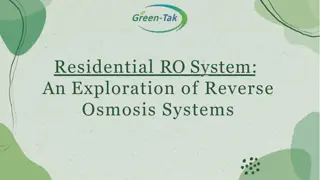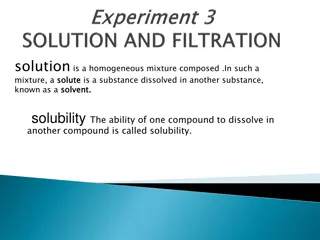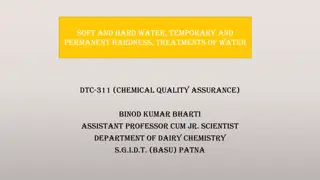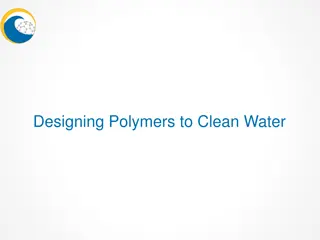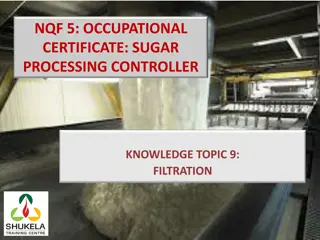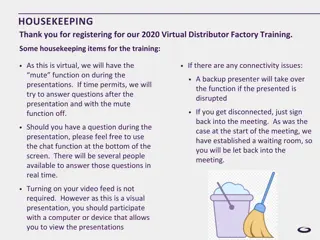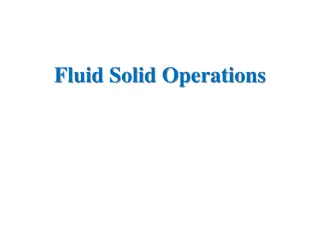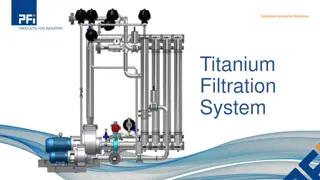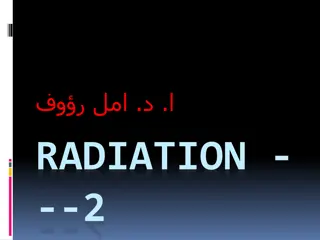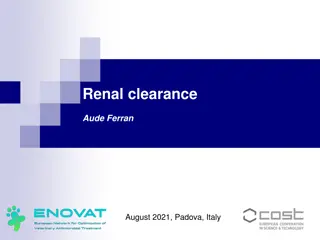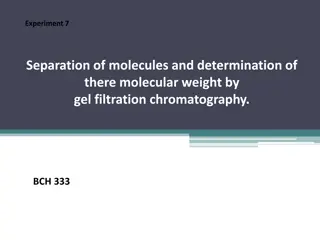Understanding Filtration Mechanisms in Water Treatment
The filtration mechanism in water treatment involves various processes such as straining, sedimentation, impaction, and interception. Different types of filters like slow sand filters, rapid sand filters, and pressure filters play a crucial role in removing solids from water. Monitoring filtration instrumentation is essential for maintaining efficiency in the filtration process.
Download Presentation

Please find below an Image/Link to download the presentation.
The content on the website is provided AS IS for your information and personal use only. It may not be sold, licensed, or shared on other websites without obtaining consent from the author. Download presentation by click this link. If you encounter any issues during the download, it is possible that the publisher has removed the file from their server.
E N D
Presentation Transcript
The mechanism by which granular filtration media remove solids from water are complex and are not fully understood. Common theories suggest a number of mechanism that act simultaneously in the solids removal process.
These mechanism are 1. straining 2. sedimentation 3. impaction 4. interception
Types of filter Slow sand filter: they have a hydraulic application rate less than 10 cubic meter / square meter. Day. An underdrain system is installed under the sand bed to collect the filtered water.
Rapid sand filter They have a hydraulic application rate of a approximately 120 240 m3/m2. day. A suitable filter media (usually sand) is used and this media is supported by gravel bed and an underdrain system collects the filtered water
Pressure filter The main difference between gravity and pressure filters are the head required to force the water through media bed and the type of vessel used. Gravity filters usually require 2 to 3 meter of head and are housed in open concrete tank.
(d) water up through the controlling well after sand scraping work in order to expel trapped air in the filter bed before raw water in reintroduced to the filter. Filtrate Return Pipe The filterable return pipe server to return filtered to about 100mm above the sand surface 6.11.7 Filter Instrumentation monitoring. These are : Simple instrumentation is required for filter (a) (b) Loss of head indicator Rate of flow indicator
The loss of head indicator is useful in determining when filtration is to be stopped and the sand surface renewed by scraping the top 10-30mm of sand surface. Constant rate of flow through the filters can be maintained by constant flow valves or manually by regulating the valves in conjuction with flow indicators. Typical section of the slow sand filter is an in Fig. 1 6.11.8 Rapid Sand Filter a filters, generally about 30-40 times higher. Rapid sand filters are designed with filtration rates of much larger magnitude than those of show sand
Water of high or variable turbidity cannot be effectively treated with slow sand filters. Rapid sand filters are used instead, preceded manually with treatment of water by chemical coagulation, flocculation and clarification. filters does not only depend on filter design alone but also on pre-filtration processes and operational parameters. In general the performance of rapid sand
6.11.9 Basic Components basic through the different. The Rapid sand filters have almost similar components as the slow sand filters design of these components are However, these is a fundamental differences in that there is backwashing system for filters. rapid sand The basic components include : (a) Filter tank (b) Filter sand (c) Gravel support bed
(d) (e) (f) Underdrain system Wash water outlet channel Filtered water channels and pipeworks requirement process Built-in flexibility is an essential design not only for filters but also other components. The pipeworks and channels to and from the filters may be designed to cater up to 50% above the normal design requirements to about meet this flexibility.
6.11.10 Filtration Rate 5m3/m2/hr. The filtration rate used in normal rapid sand filters is based on the standard when A higher rate up to 7.5m3/m2/h is allowed one of the filters is out for backwashing. be A filtration site higher than 5m3/m2/h should used in upgrading of filters only.







